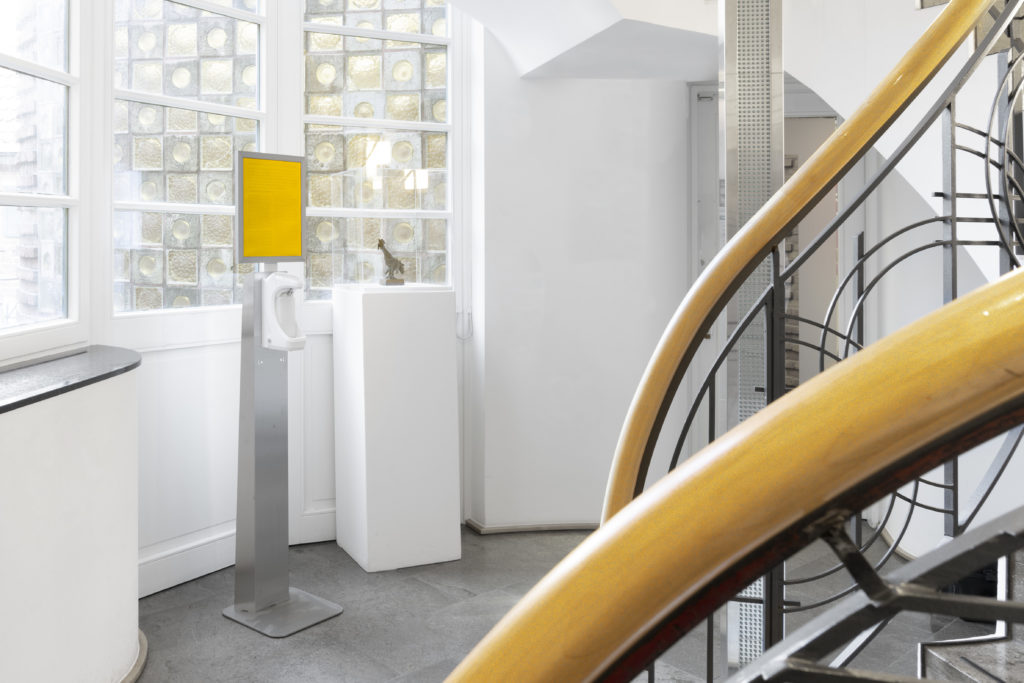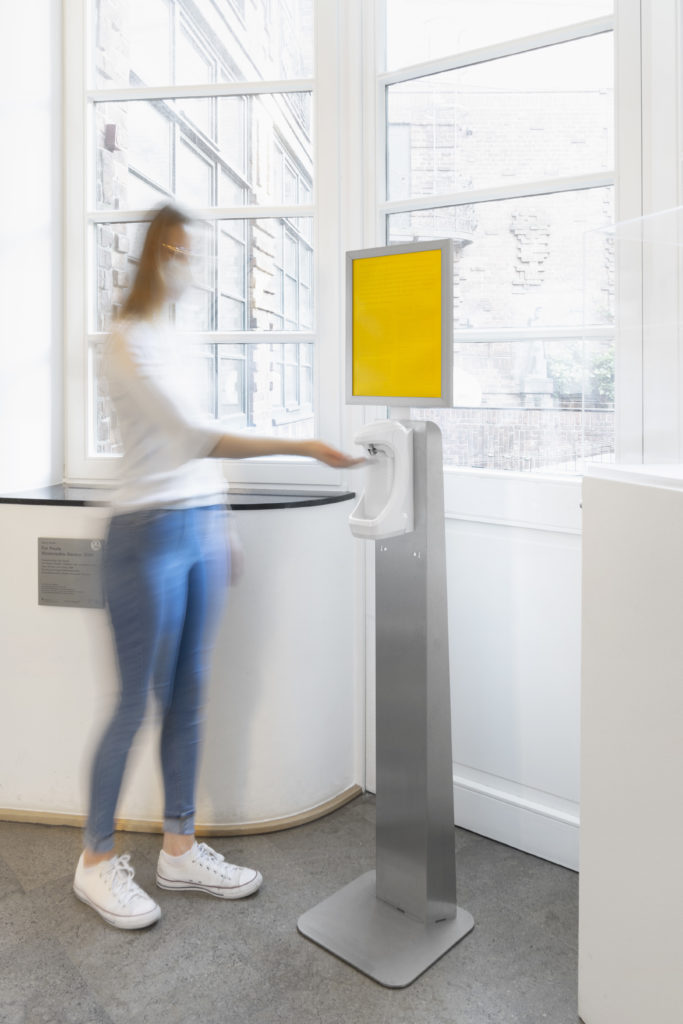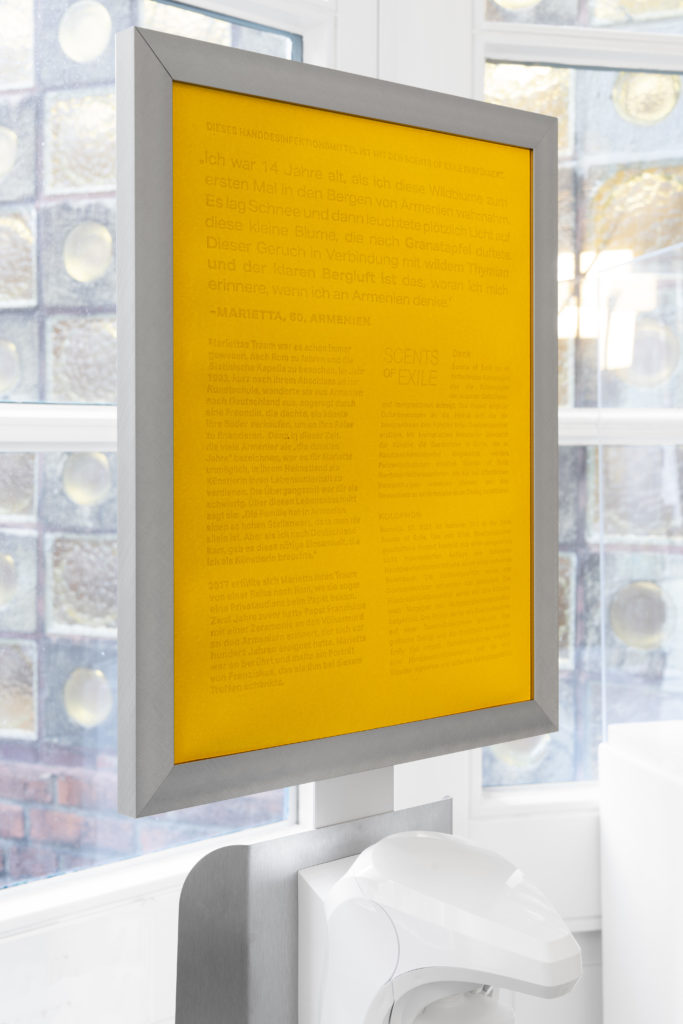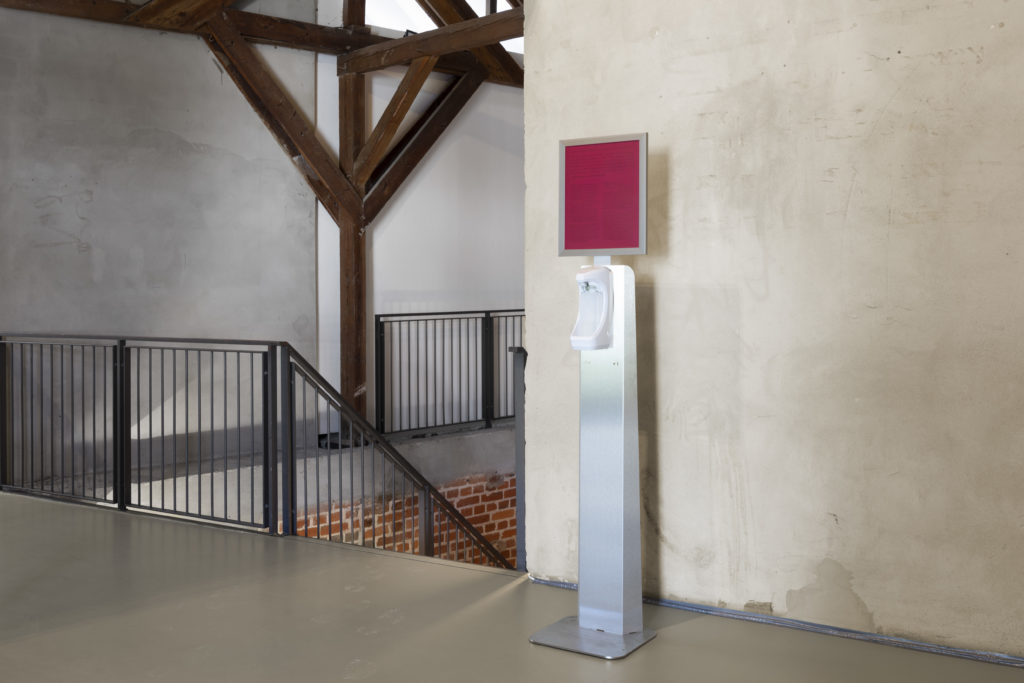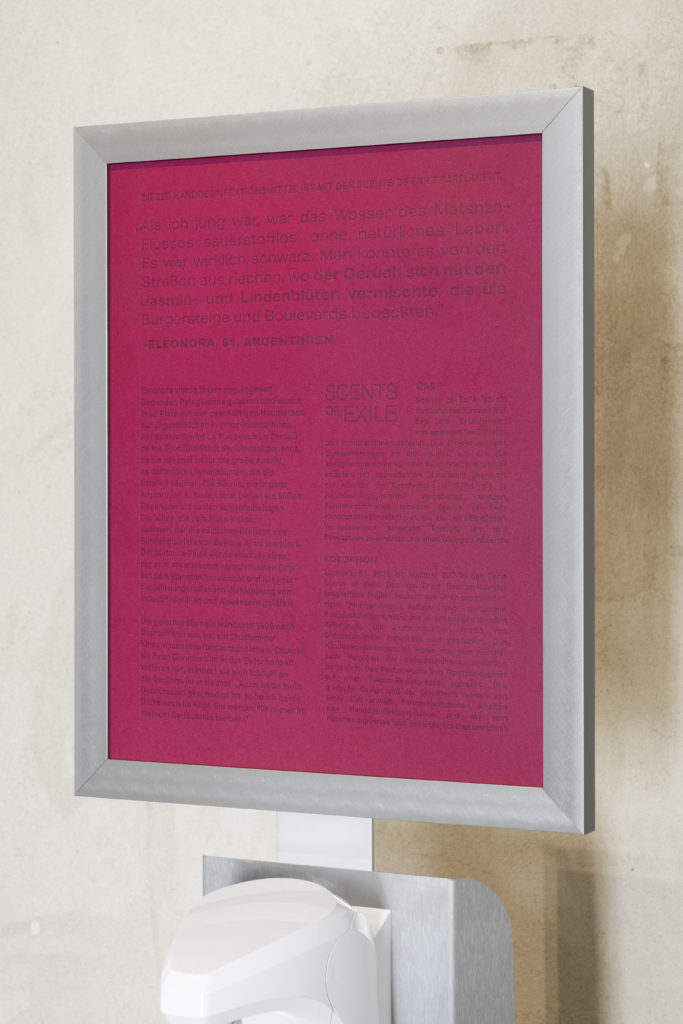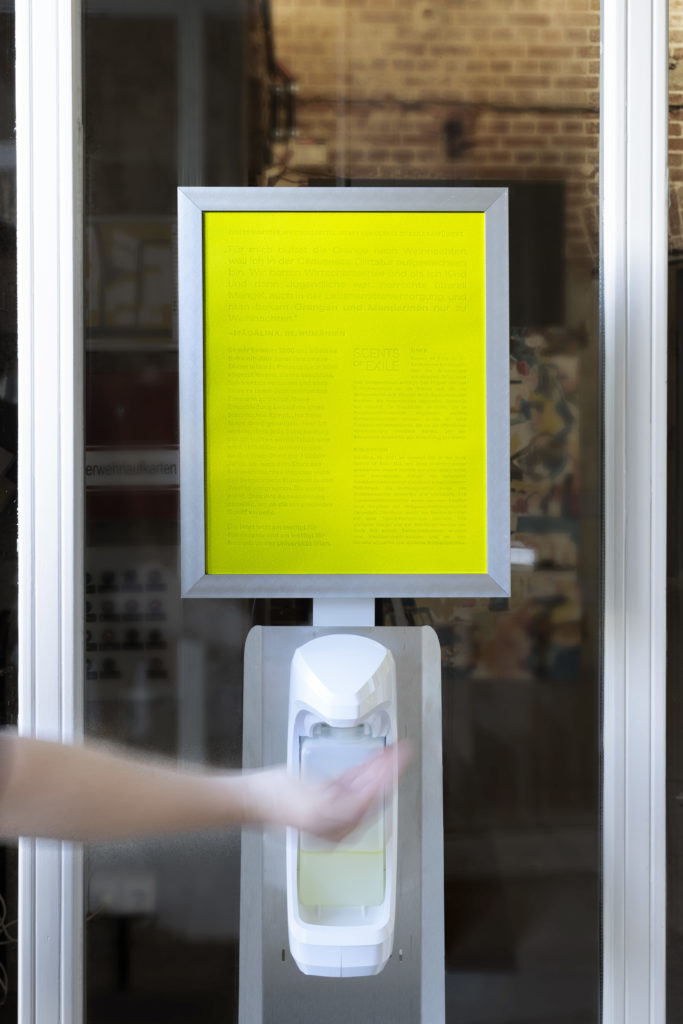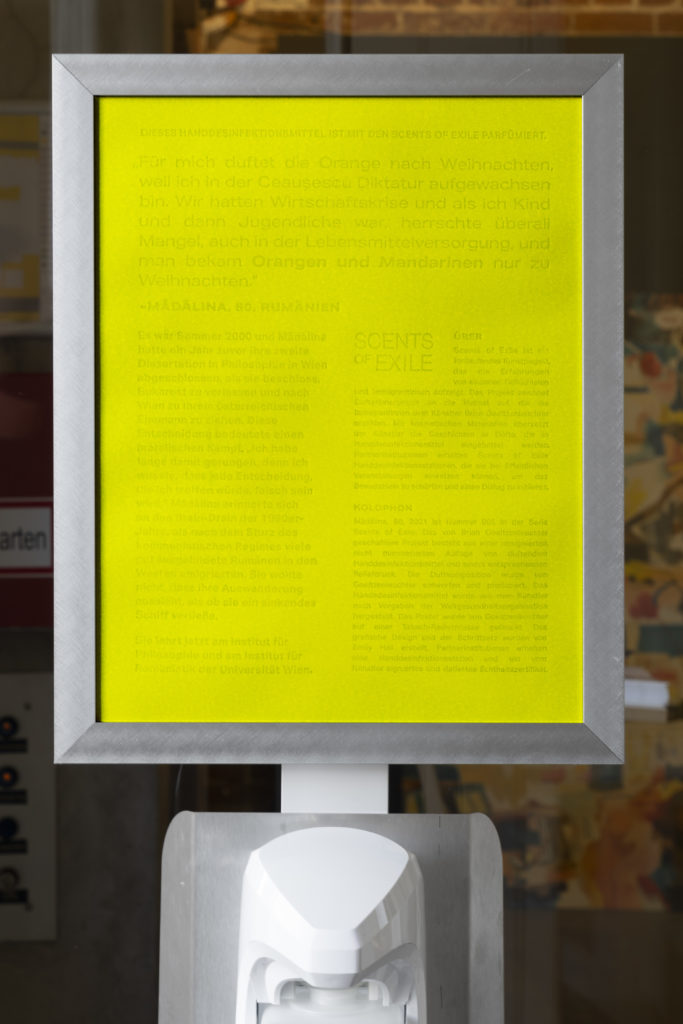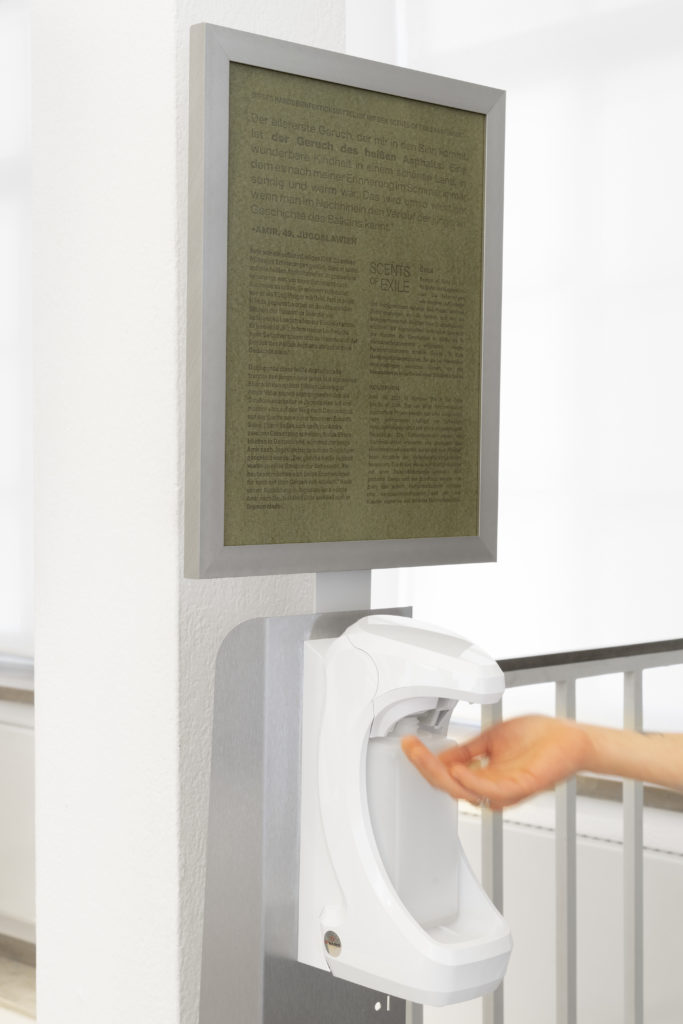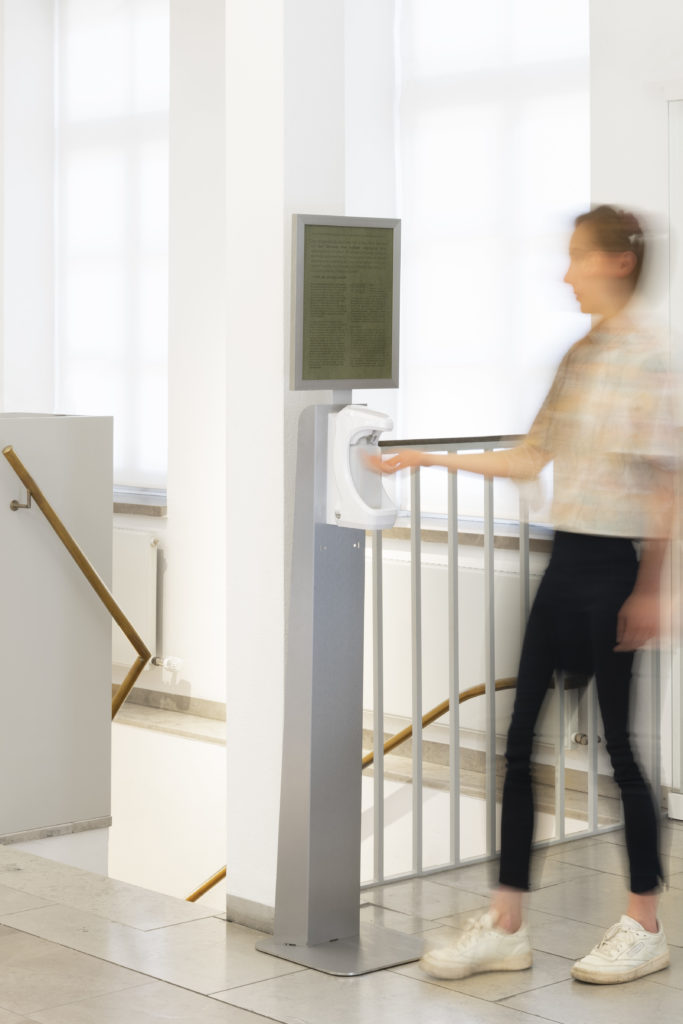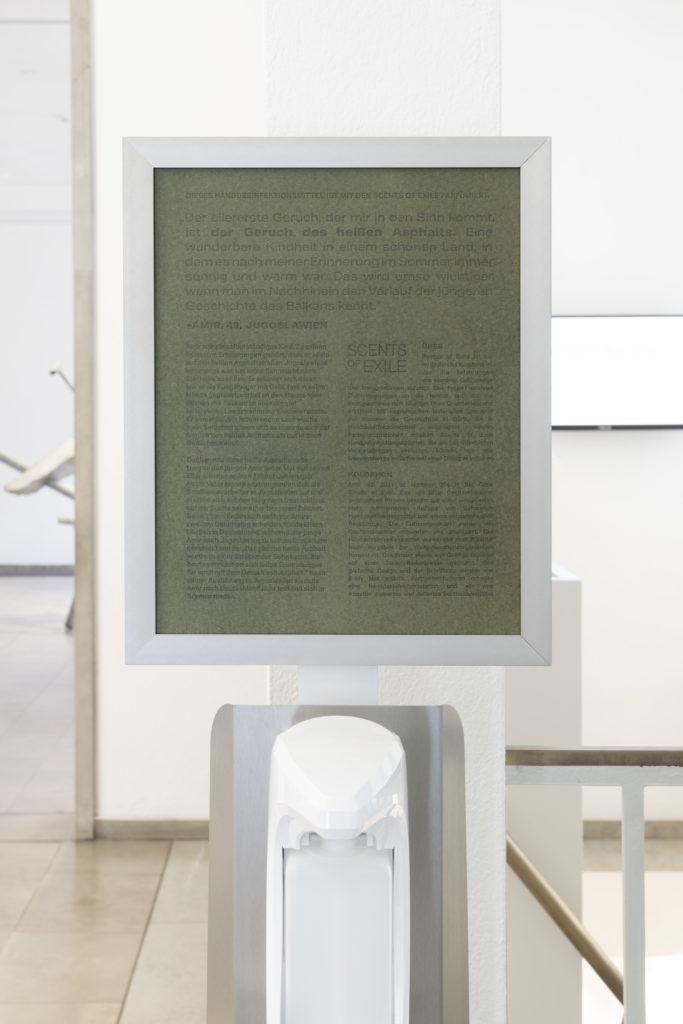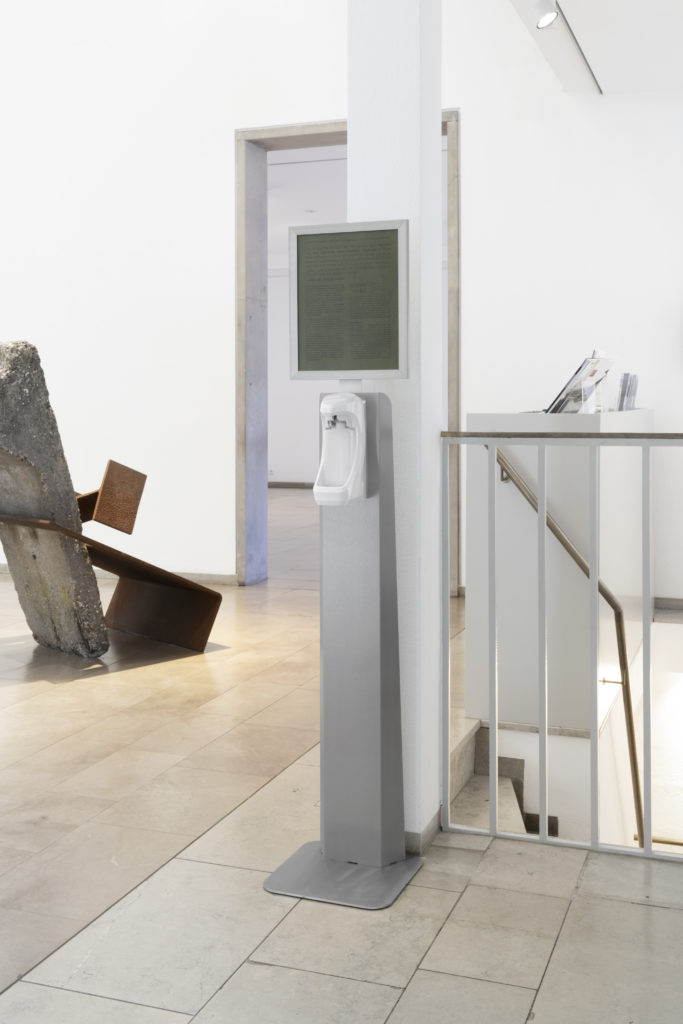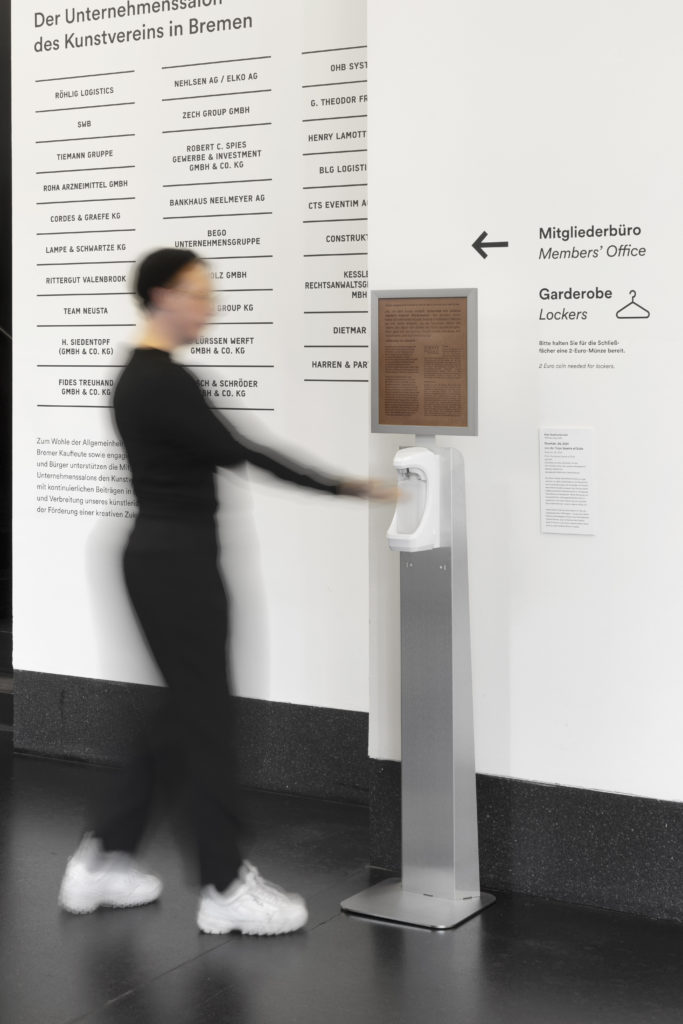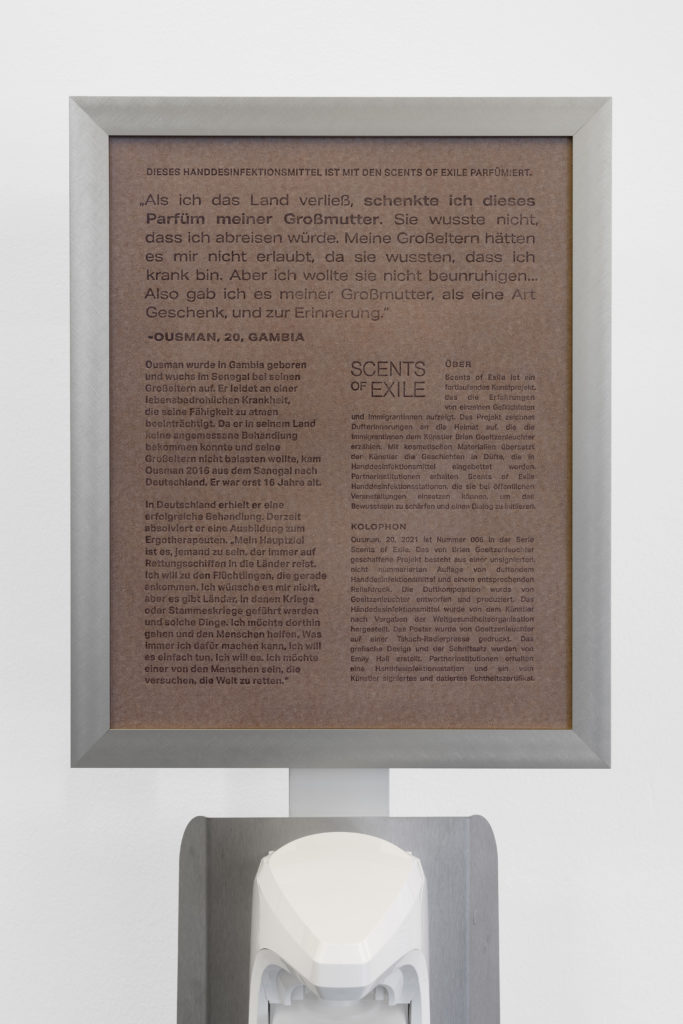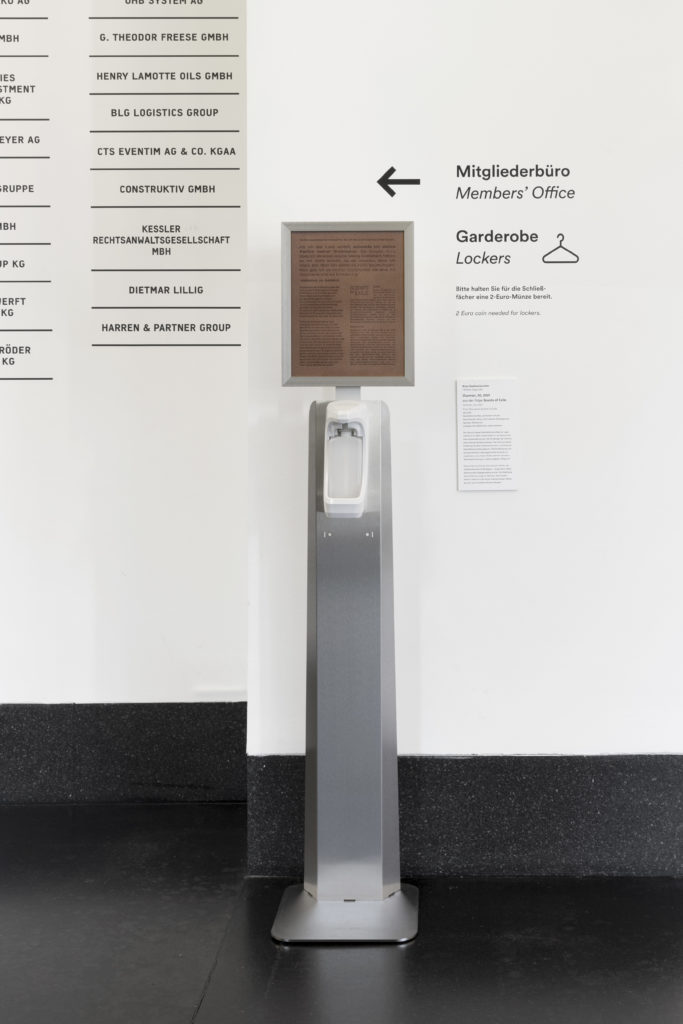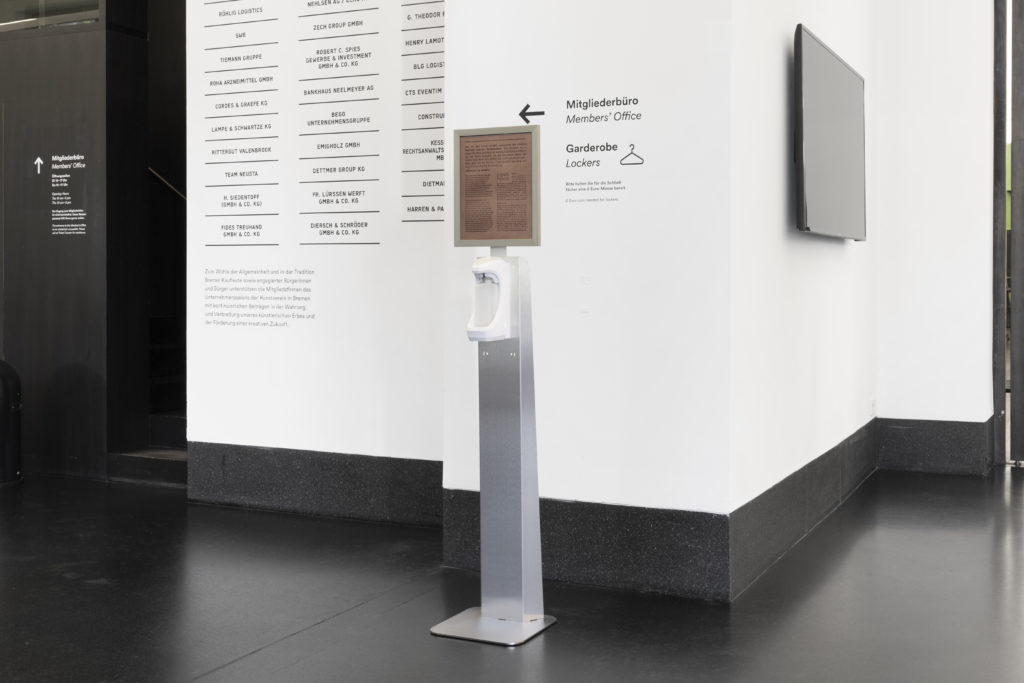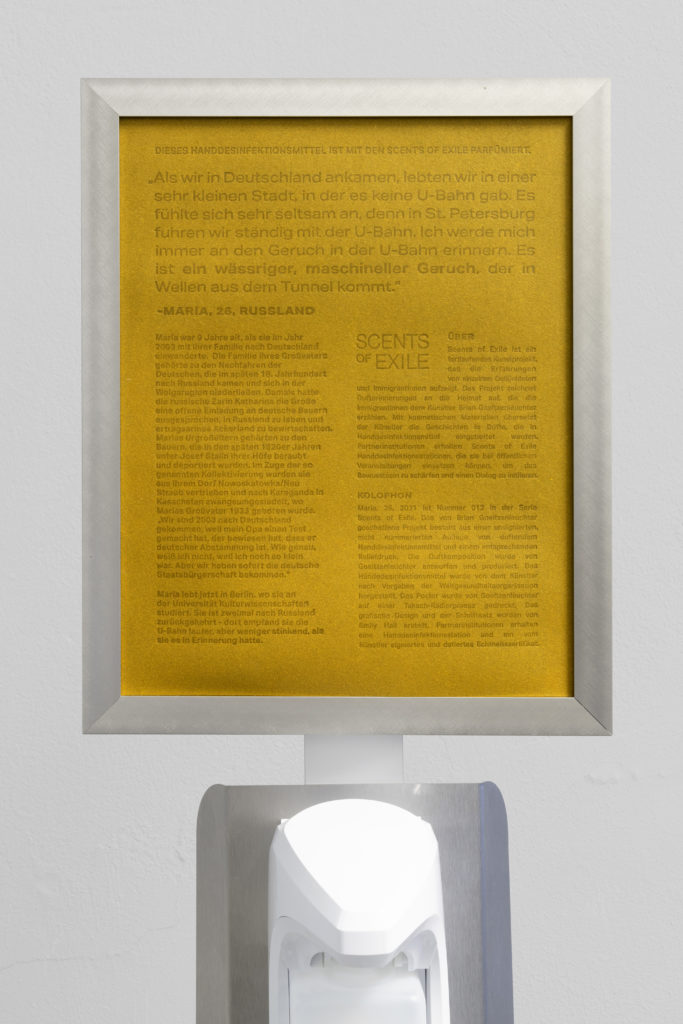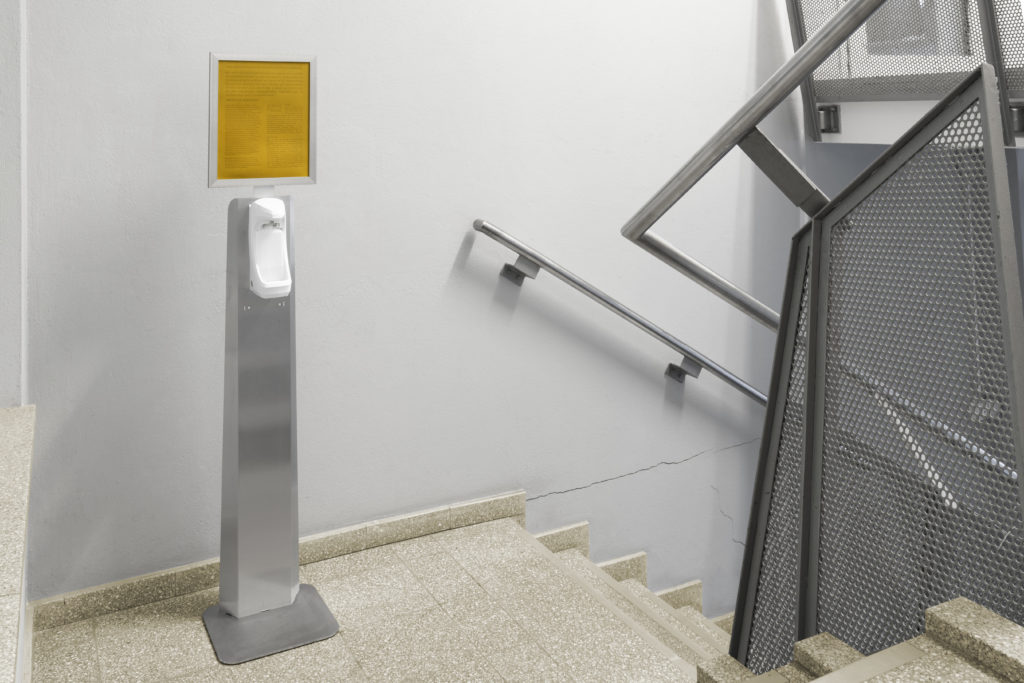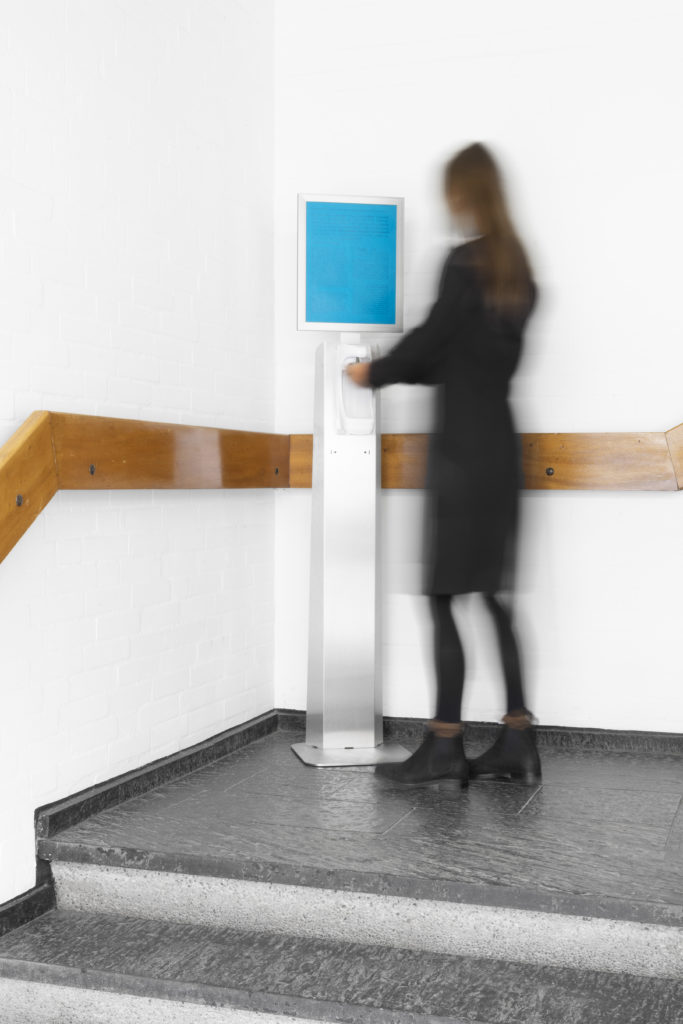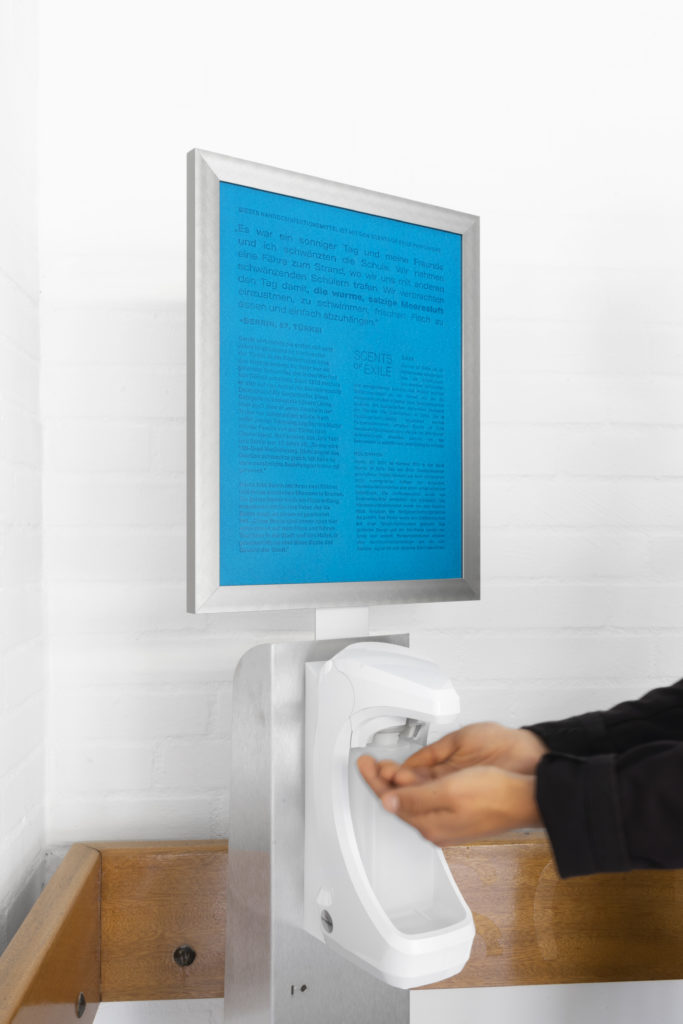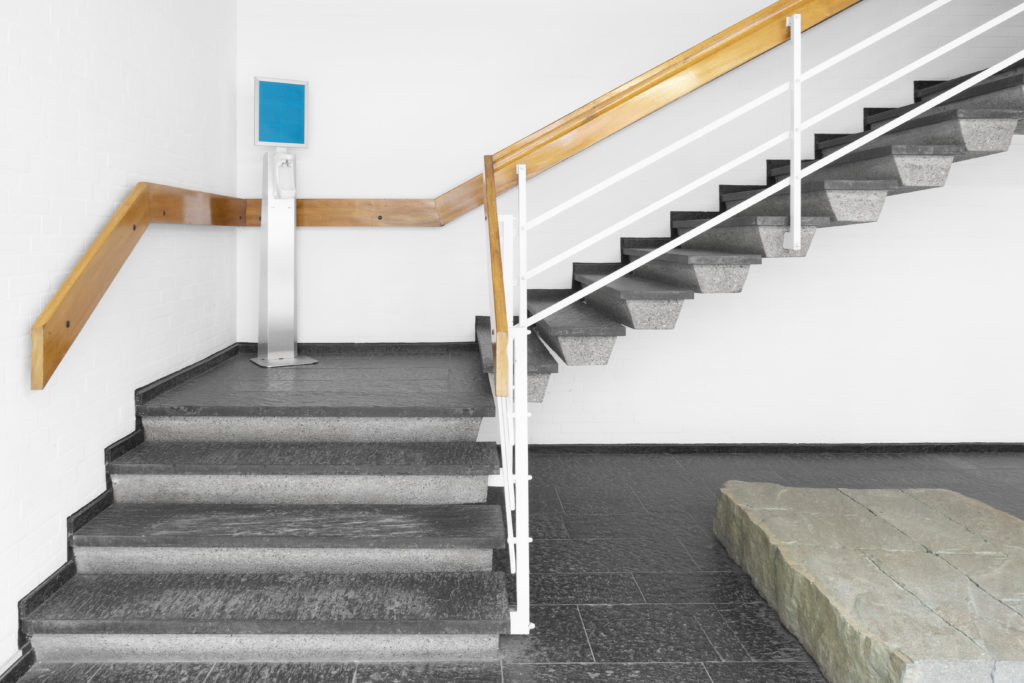-
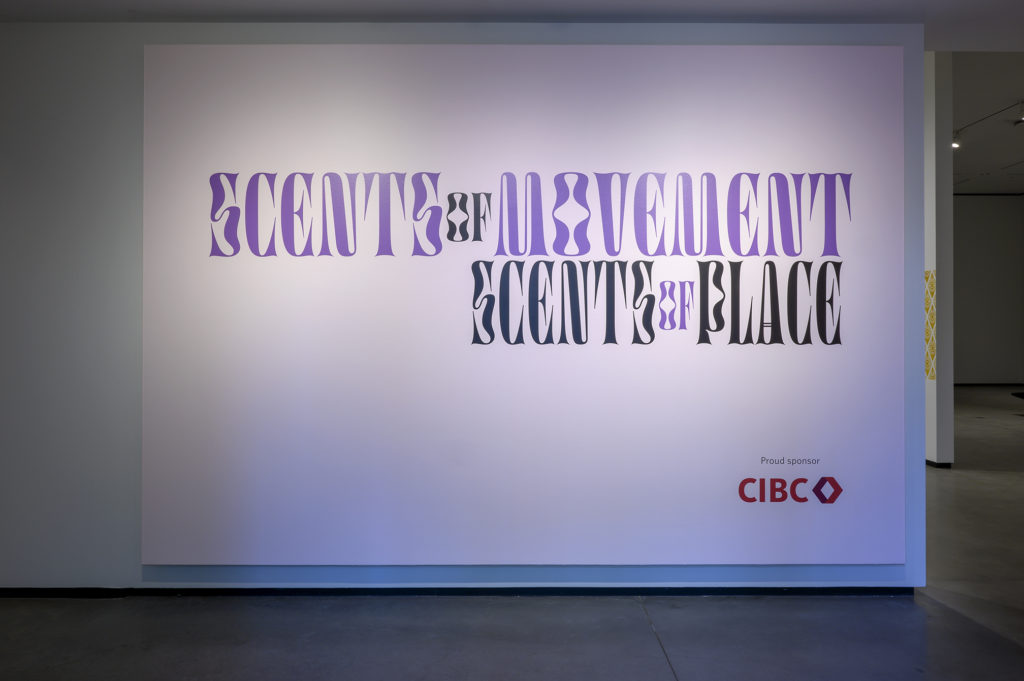
Installation view of Scents of Movement, Scents of Place Art Gallery of Alberta, Edmonton, 2022. Photography by Charles Cousins, courtesy of the Art Gallery of Alberta
-
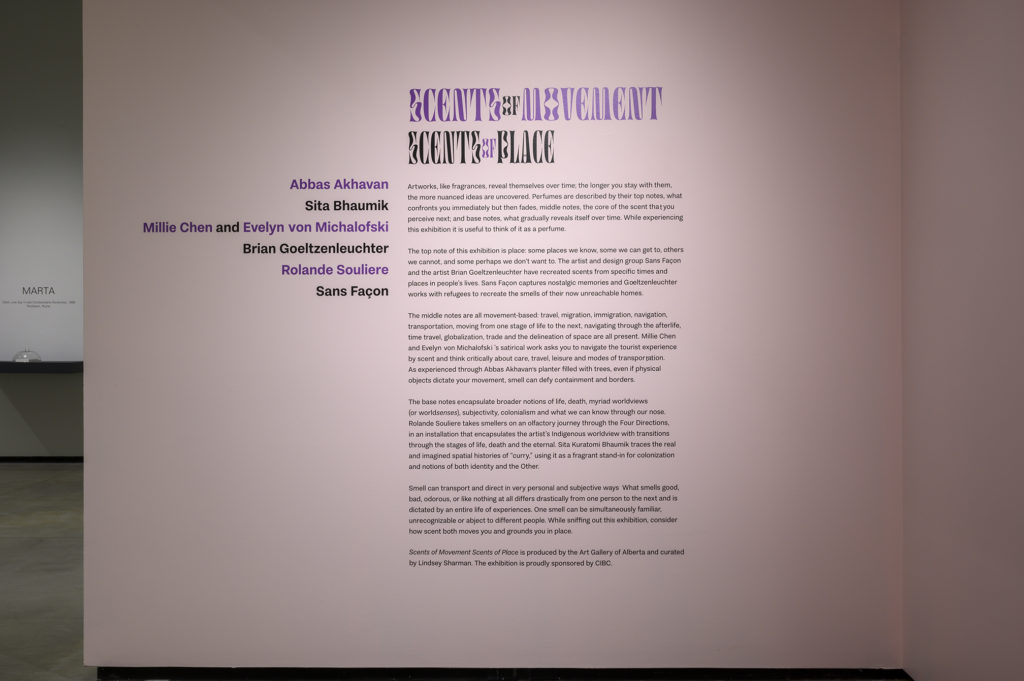
Installation view of Scents of Movement, Scents of Place Art Gallery of Alberta, Edmonton, 2022. Photography by Charles Cousins, courtesy of the Art Gallery of Alberta
-
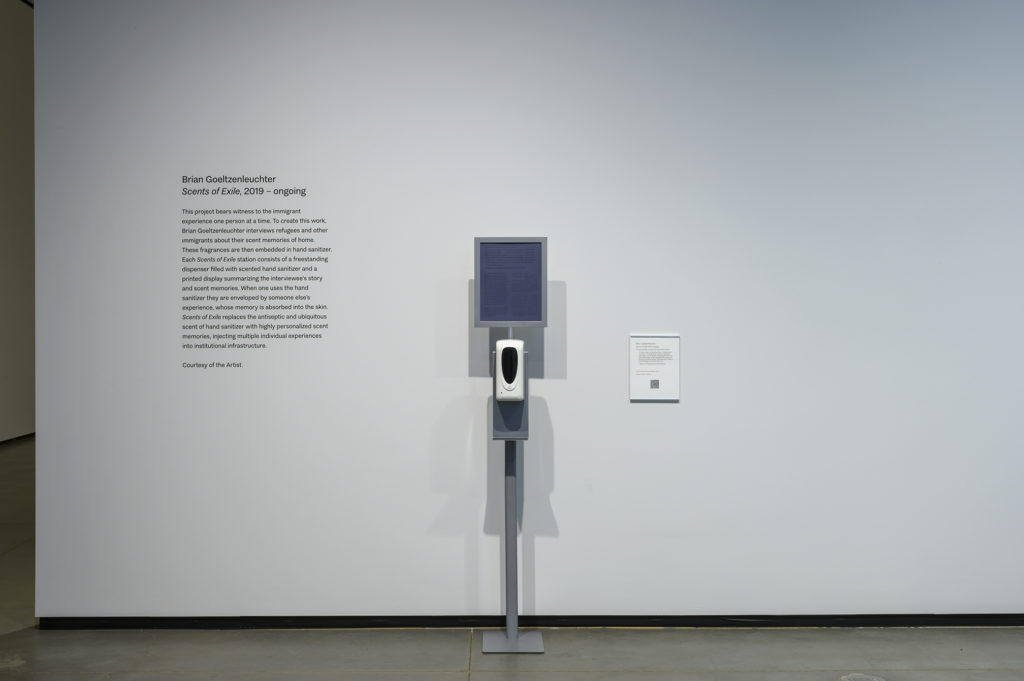
Brian Goeltzenleuchter, Scents of Exile: Habte (Ethiopia, winter) 2019/2022 . Installation view of Scents of Movement, Scents of Place, Art Gallery of Alberta, Edmonton, 2022. Photography by Charles Cousins, courtesy of the Art Gallery of Alberta
-
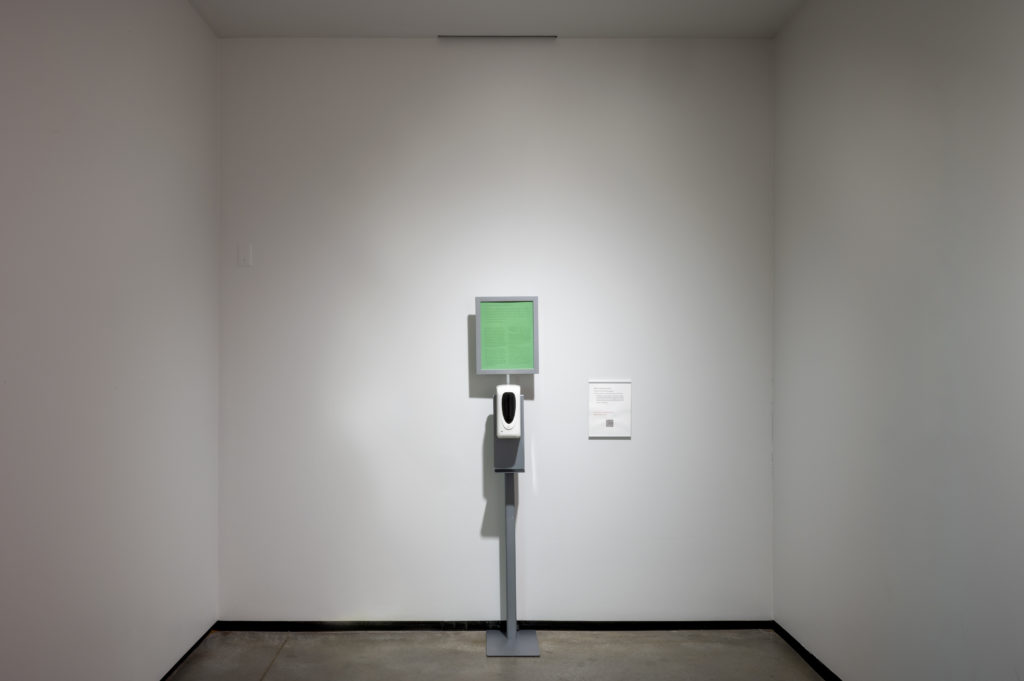
Brian Goeltzenleuchter, Scents of Exile: Qasim (Pakistan, incense) 2019/2022 . Installation view of Scents of Movement, Scents of Place, Art Gallery of Alberta, Edmonton, 2022. Photography by Charles Cousins, courtesy of the Art Gallery of Alberta
-
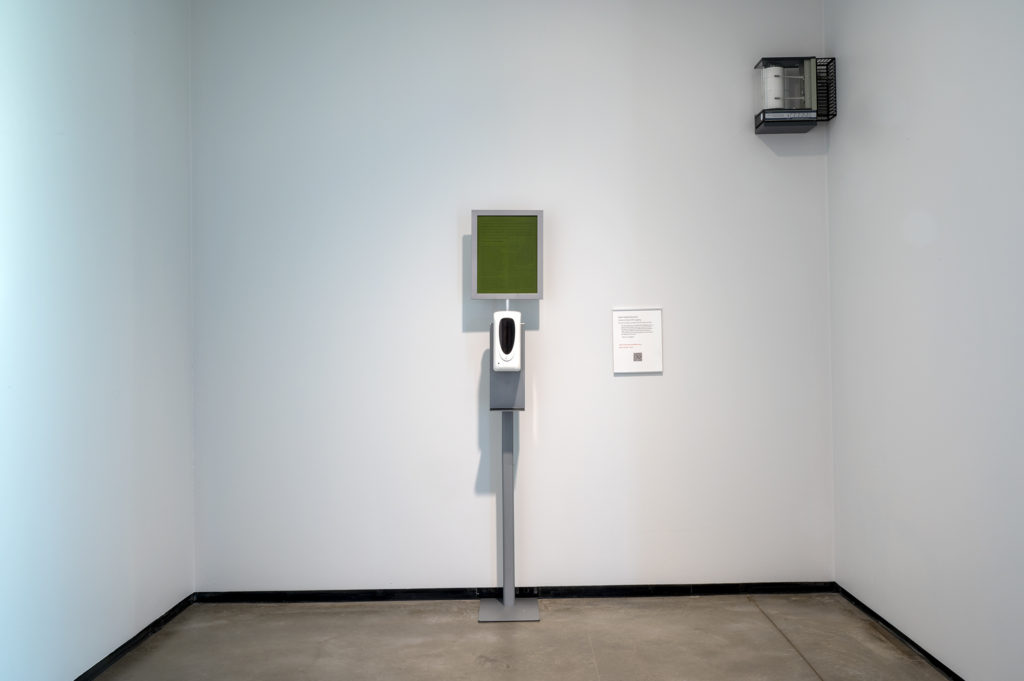
Brian Goeltzenleuchter, Scents of Exile: Maria (Bulgaria, Dirt) 2019/2022 . Installation view of Scents of Movement, Scents of Place, Art Gallery of Alberta, Edmonton, 2022. Photography by Charles Cousins, courtesy of the Art Gallery of Alberta.
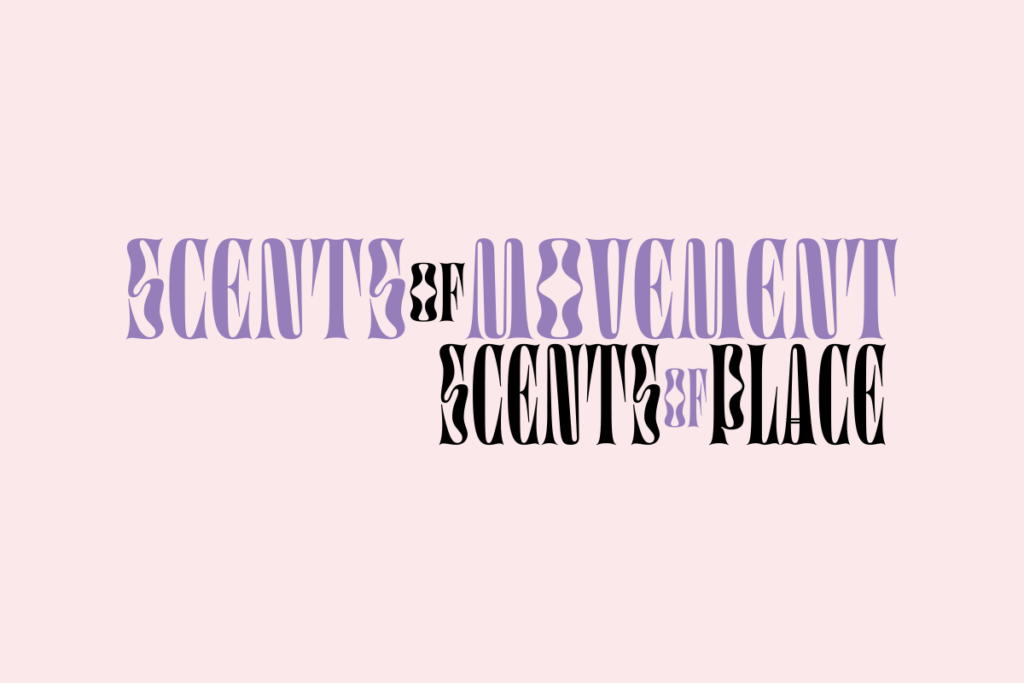 Exhibition Statement (via Art Gallery of Alberta): Artworks, like fragrances, reveal themselves over time; the longer you stay with them, the more nuanced ideas are uncovered. Perfumes are described by their top notes, what confronts you immediately but then fades; middle notes, the core of the scent that you perceive next; and base notes, what gradually reveals itself over time. While experiencing this exhibition it is useful to think of it as a perfume.
Exhibition Statement (via Art Gallery of Alberta): Artworks, like fragrances, reveal themselves over time; the longer you stay with them, the more nuanced ideas are uncovered. Perfumes are described by their top notes, what confronts you immediately but then fades; middle notes, the core of the scent that you perceive next; and base notes, what gradually reveals itself over time. While experiencing this exhibition it is useful to think of it as a perfume.
The top note of this exhibition is place: some places we know, some we can get to, others we cannot, and some perhaps we don’t want to. The artist collaboration Sans façon and the artist Brian Goeltzenleuchter have recreated scents from specific times and places in people’s lives. Sans façon captures nostalgic memories and Goeltzenleuchter works with refugees to recreate the smells of their now unreachable homes.
The middle notes are all movement-based: travel, migration, immigration, navigation, transportation, moving from one stage of life to the next, navigating through the afterlife, time travel, globalization, trade and the delineation of space are all present. Millie Chen and Evelyn von Michalofski’s satirical work asks you to navigate the tourist experience by scent and think critically about care, travel, leisure and modes of transportation. As experienced through Abbas Akhavan’s planter filled with trees, even if physical objects dictate your movement, smell can defy containment and borders.
The base notes encapsulate broader notions of life, death, myriad worldviews (or worldsenses), subjectivity, colonialism and what we can know through our nose. Rolande Souliere takes smellers on an olfactory journey through the Four Directions, in an installation that encapsulates the artist’s Indigenous worldview with transitions through the stages of life, death and the eternal. Sita Kuratomi Bhaumik traces the real and imagined spatial histories of “curry,” using it as a fragrant stand-in for colonization and notions of both identity and the Other.
Smell can transport and direct in very personal and subjective ways. What smells good, bad, odorous, or like nothing at all differs drastically from one person to the next and is dictated by an entire life of experiences. One smell can be simultaneously familiar, unrecognizable or abject to different people. While sniffing out this exhibition, consider how scent both moves you and grounds you in place.
This exhibition is produced by the Art Gallery of Alberta and curated by Lindsey Sharman.

Article (via C Mag):
In October 2021, the British Museum announced that it has the earliest known image of a ghost. On this Babylonian clay tablet, a figure stands with feet on the ground and hands tied, being led into the afterlife by a female figure. We know this is a ghost because the accompanying cuneiform inscription describes that this man has come back from the dead, and includes instructions on how to exorcise his miserable spirit and untether him from this world. The ritual includes making small effigies, offering beer, and burning juniper incense at sunrise1 Many funerary practices all over the world use smells, oils, and incenses. Our sense of smell is our most immediate sense, and most intimately tied to memory; it has the ability to tug or shove us in unexpected directions, to make us time travel to extremely specific times and places, and to soothe. It’s no wonder, then, that smell and grief have long been intertwined.
Azza El Siddique uses sacred and secular scents that for her conjure memories of home, women, and care. These scents are used in contemporary Islamic funerary practices as well as for personal enjoyment in the home, and she has even traced their use back to ancient Egyptian texts. Egyptians and Nubians believed that fragrant scents were the smells of the gods—and so, to burn incense is to be in their presence. In Fade into the Sun (2021), scents are placed in ceramic water lily vessels—the water lily one of the manifestations of Dedwen, the Egyptian god of incense—and activated by heat lamps. Her installations also typically include unfired ceramics, sometimes embedded with scents, that dissolve by the slow dripping of water over and through them. The ceramics rarely survive being exhibited. As drops of water cause them to fragment and decompose one molecule at a time, the scents swirl around the space. Here, one might smell bukhoor, an incense made by soaking wood chips in fragrant oils and resins. El Siddique uses bukhoor of rose, musk, and sandalwood she purchased from a Middle Eastern market, because it triggered memories of the Sudanese women she grew up with. She also uses sandaliya in her installations, an oil made from sandalwood that can be mixed with other scents and used in bukhoor incense, but on its own is used by family members to wash the body after death and is placed on the joints of the deceased. The slow decomposition of the ceramic vessels in El Siddique’s installations conveys the gradual transition from one state to the next. Although it is often regarded as abrupt, death is a slow process of returning to the earth.
Rolande Souliere, who is Anishinaabe and a member of the Michipicoten First Nation, is similarly engaged in exploring the scent traditions of her family and her ancestors. She shared with me that, after death, cedar is soaked in water, and this infused water is used to wash the deceased’s body. At the wake, family and friends drink cedar tea and use cedar branches to build a ceremonial fire. The resin, oil, and smoke of cedar cleanses the body, purifies it, helps to wash away the physical world and prepare the spirit to travel through the seven doors back to the spirit world. For Souliere, the spirit realm is home. This physical realm is fleeting; we are simply spiritual beings temporarily brought out of the spirit world to live this human experience.
The artist has been working on an installation called The Four Directions-an olfactory journey (forthcoming), which will have both synthesized and natural scents of cedar, sweetgrass, tobacco, and sage in isolated pure scents and in blends intended to evoke the ethos of each of the four directions. With those eight scents, along with 36 intertwining multimedia elements marking the points around and through the four directions, Souliere is attempting to encompass her entire worldview, including physical and spiritual worlds, clans and their respective attributes, and the stages of life, afterlife, death, and birth. According to this holistic worldview, there is no grief because there is no loss; like El Siddique’s ceramics that flow into water, things move to a different stage or transition to something else.
In her most recent project, What the fragrant lilies are trying to cover up (2021), Vicky Sabourin has undergone a shift of a slightly different nature. The artist was once repulsed by and ashamed of the odours of her grandmother and uncle’s shared home, but after their 2019 passings, mere months apart, she has been working to preserve its array of smells. By clearing out the house and going through every one of their belongings, she found a deeper closeness and intimacy with them than would ever have likely been possible in life; she has come to know aspects of them that had never been shared, and has come to a fuller love, acceptance, and understanding. The primary way to engage with What the fragrant lilies are trying to cover up is to sign out a care package from Musée d’art de Joliette that includes objects and scents from Sabourin’s uncle and grandmother. She has not only caringly re-created the scents, but is now sending them out into other people’s homes in an unselfconscious act of communion.
The box contains Neiges by Lise Watier, which her grandmother always wore; a blend created to smell like wine-tipped Colts cigars (a favourite of her uncle’s); small ceramic worms that are perfumed; a woman’s shoe insole from her uncle’s private collection that Sabourin found hidden in his belongings; several lily and lilac blends; and a book written by Sabourin that details her loved ones’ deaths and some of her grieving process. She describes her grandmother dying surrounded by loved ones, and finding her uncle alone and dead on his kitchen floor, when she smelled death for the first time. She describes putting a blend of patchouli and ylang-ylang under her nose to combat the smell of the house, a realtor handing out lilacs for guests to carry under their noses at an open house, the lilies from her grandmother’s wedding, and the lilies from her grandmother’s funeral. The contents of the box are drawn and described through a chocolate box-style index, and a sign-out sheet like those found in old library books keeps a trace of everyone who has borrowed it. Grief is overwhelming and unfocused; by isolating, deconstructing, and then cataloguing the scents of her loved ones, she is able to compartmentalize her grief, order it, and name it. Although scent is also illusive and ineffable, in this case Sabourin uses it as a tool to pin down grief. With a nod to the fact that grief can also often plunge you into a world of loneliness, the boxes take Sabourin’s private individual experience and translate it to a collective one. Similar to the olfactory rituals undertaken by El Siddique’s and Souliere’s families, this too signals the necessity of shared processing.
Since 2019, Brian Goeltzenleuchter has been recreating scents of homes as well—but in his case, homes to which refugees and immigrants will never return. Goeltzenleuchter has long worked with scent and often initiates projects through interviews and questionnaires. For Scents of Exile (2019–ongoing) he has worked with newcomers to the United States who share scent memories that range from mundane to tragic to humorous. After rendering the stories into scents, the artist infuses them into hand sanitizer. When Scents of Exile is exhibited, museum-goers use the sanitizer dispensed from now-common stations you’d encounter in any public building. Qasim’s scent, one of 15 created so far, is that of oud-based incense, and his story is about his confusion over many Westerners’ everyday use of what in Pakistan is a ceremonial scent used in funerary rites. He thinks it’s funny that his American girlfriend’s house often smells like a wake.
When someone uses this hand sanitizer, they are enveloped by Qasim’s memory while their own associations rise up to meet it. Similarly to What the fragrant lilies are trying to cover up, experiences and memories are absorbed into skin to build upon and muddy the subjectivity of scent. Scents of Exile replaces the antiseptic, ubiquitous scent of hand sanitizer with highly personalized scent memories, injecting multiple individual experiences into institutional infrastructure. While Sabourin’s scents are meant to be lasting, not only on the skin of those who take them home but as a living archive that will continue to hold her memories, the smells of Scents of Exile are designed to be fleeting. After mere moments, the scent of incense or dirt or rice or gun powder is gone and only your brief close encounter remains. Like El Siddique’s disintegrating ceramic works, these scents are made to fade, mimicking memories in their ephemerality.
Sabourin’s and Goeltzenleuchter’s impulse to capture, translate, and replicate scents in order to sustain memory access points in the face of grief resonates with Resurrecting the Sublime (2019). A collaborative research group—Dr. Alexandra Daisy Ginsberg, the olfactory artist Sissel Tolaas, and a team of synthetic biologists at Ginkgo Bioworks led by Dr. Christina Agapakis—has attempted to synthesize the smells of flowers that have been made extinct through colonial activity by extracting DNA from dried and pressed plant samples held in the Harvard University Herbaria collection. Twenty extinct specimens are held in this collection; the researchers were able to collect material from 14, and from them, three were successfully synthesized.
The Hibiscadelphus wilderianus (or Maui hau kuahiwi in Hawaiian), which smelled of juniper, citrus, and thyme, lived on ancient lava fields on the southern slopes of the dormant volcano Haleakalā on Maui. Its forest habitat was decimated by early 20th-century cattle ranching. In 1912 the botanist Gerrit Wilder (after whom the plant was named) plucked the last flower from the one remaining nearly 5 m tree that died soon after. The Orbexilum stipulatum, or Falls-of-the-Ohio scurfpea—a woody, peppery, balsamic-scented legume—was last documented in 1881 on Rock Island in the Ohio River, near Louisville, KY, not long before the area was flooded due to the construction of a dam. The third was Leucadendron grandiflorum, the Wynberg Conebush, although, through the DNA sequencing of this specimen, the team suspects that the sample held in the Harvard collection as well as those in other botany collections had been improperly labelled. It’s likely that no specimens remain at all. The last presumed accurate documentation of this over 1.5-m-tall flower was in a collection in London, England, in 1805, at which time its habitat just outside Cape Town in South Africa had already been converted into vineyards.The scent that was created smells of jasmine, lemongrass, cannabis, chamomile, turmeric, ginger, and hops, but because the sample may have been mislabelled there’s no way to gauge its accuracy2
Whatever these three plants truly were, what can be produced by Ginsberg and her team is a hopeful approximation. Even if the smell molecules are known, the team sometimes used molecules that are very close but not identical to what the plant was able to produce, and we don’t know how or even if these plants produced all the smell compounds their DNA indicates they could. Furthermore, it’s impossible to know the quantity or ratios—like having the contents of your grandmother’s cupboard but not the recipe of her famous dish. With all of this considered, it’s poignant and humbling to realize that what Resurrecting the Sublime has created is only a best guess. The substitution highlights the absence, showing that despite scientific expertise and boundless artistic imagining, extinct species cannot be resurrected after all.
Human activity has already changed how our world smells—not only through the loss of plants like Maui hau kuahiwi or the Wynberg Conebush but as a reaction to the loss of oxygen in our atmosphere. Biogenic volatile organic compounds (BVOCs) are how plants communicate with one another; to human perception, BVOCs are how plants smell. As CO2 concentrations increase in our atmosphere and temperature rises, plants react by producing more BVOCs3 This will, among other things, continue to change smell-scapes all over the world. Designer Omer Polak’s Olfactory Forest (2019) is an homage to lost and changing forest smell-scapes and their benefits to environmental, physical, and emotional health. Minimal, white, and uniquely moulded rattan poles are suspended throughout the mirrored room, each containing one isolated scent—“tree resin, moss, damp soil, mammal sweat, mushrooms, Linden, broken wood, or young green leaves”—which together recreate the olfactory symphony of walking through the woods4 This installation can be seen as a sci-fi monument that might be needed in a forestless future—or as a memorial. Although smell tends to privilege the past, Polak’s work, and Ginsberg’s to some degree, looks to the future to speculate on how we will continue to grapple with our own destruction. Polak’s as yet unrealized Olfactory Forest, II creates a recently burned forest and will smell of charcoal, ash, wet soil, and burned earth, driving home not only what we have to lose but what has been already lost.
Scent by its very nature lends itself to ethereal, backward-looking, and romantic connection; it’s what relates it to grief. Spanning the spectrum from scientific to homemade, these projects each give something different for the many stages of grief. They translate experiences that oscillate between the individual and the universal, and create convening places large enough to hold the artist’s intentions and others’ lived experience. Goeltzenleuchter and Sabourin offer intricate narratives to cling to and perhaps even wallow in. Souliere and El Siddique provide ways to move on, move forward, and submit to a higher power or glimpse at a bigger picture. Ginsberg and Polak offer opportunities to look back. Although scent can never bring back what has been lost in a physical sense, it can allow us to clutch the past when loss is fresh, to move on when we are ready, and access profound recall when the crashing waves of grief subside to mere ripples.
The Institute for Art and Olfaction partnered with Smell it! The Fragrance of Art for an Olfactory Art Symposium showcasing the practices and pieces of a selection of artists exhibiting at Smell it! in Bremen, Germany. In this video, artist Brian Goeltzenleuchter is interviewed by Irena Kukrić, researcher and coordinator of the Dynamic Archive at the University of Arts, Bremen.

Olfactory Artist Brian Goeltzenleuchter joins Institute for Art and Olfaction founder Saskia Wilson-Brown for the latest edition of the conversation series, Meet a Nose. Watch here: https://vimeo.com/559055782
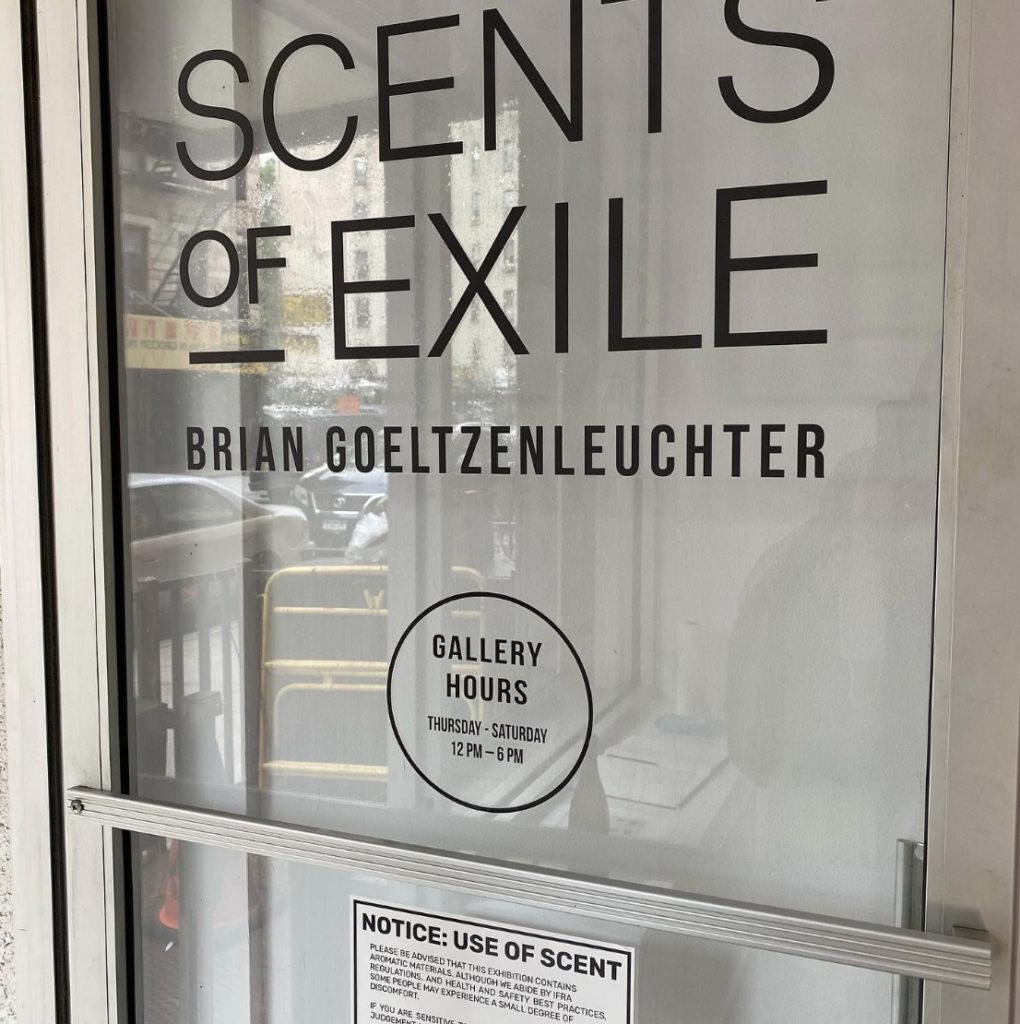
We’re closed! But the gallery opens again on Thursday. Thanks to everyone who came out for the opening of Scents of Exile at Olfactory Art Keller. Extra gratitude to Andreas, Dara, M, and Amy!
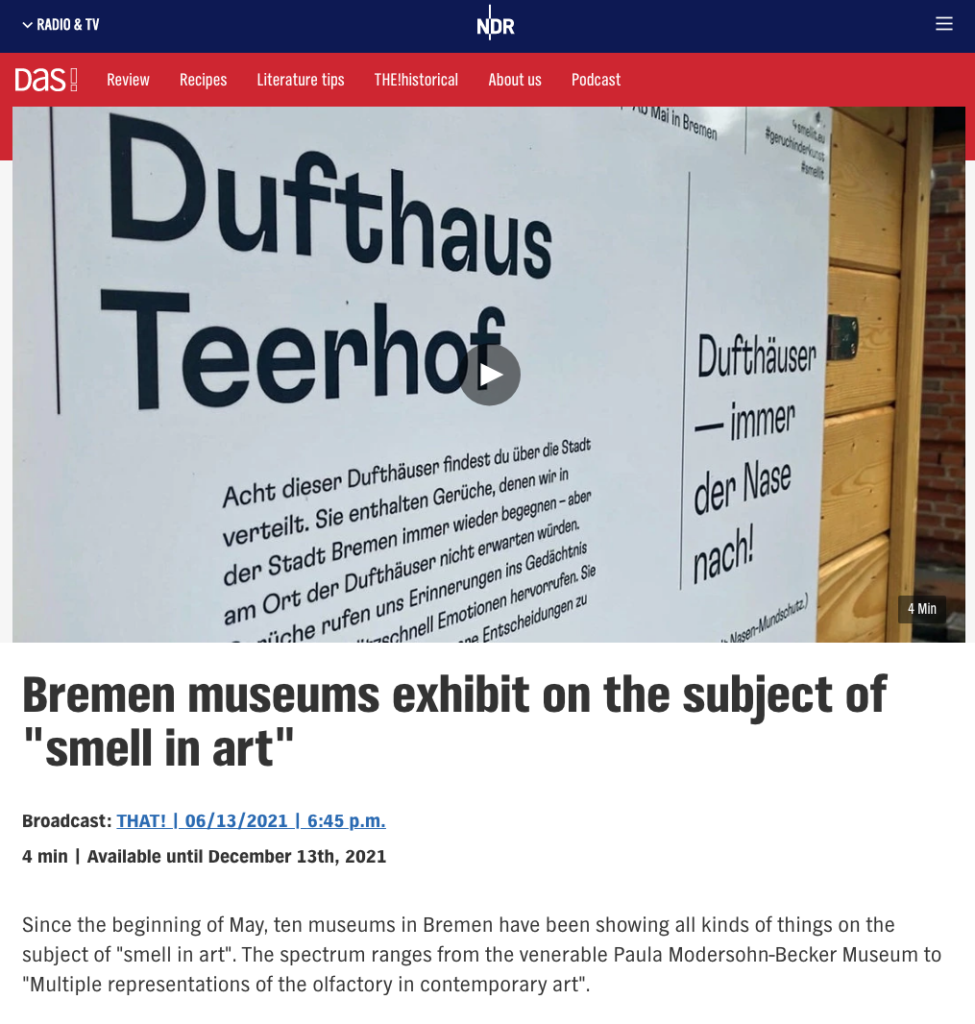
For German speakers, here’s coverage of the “Smell It!” exhibitions currently on view in Bremen, Germany, courtesy of public television and radio broadcasters, NDR: https://www.ndr.de/fernsehen/sendungen/das/Bremer-Museen-stellen-zum-Thema-Geruch-in-der-Kunst-aus,dasx24686.html

Join the conversation: In conjunction with his exhibition Scents of Exile, currently on view at Olfactory Art Keller, artist Brian Goeltzenleuchter will discuss the project with the Institute for Art and Olfaction’s Saskia Wilson Brown on June 3, at 3PM PST. Register here: https://www.eventbrite.com/e/meet-a-nose-brian-goeltzenleuchter-tickets-153695576607
The interview is part of the IAO’s Meet a Nose series. Each edition of Meet a Nose takes the form of a one-hour moderated discussion, where extraordinary thinkers, singular artists, and distinctive perfumers from around the world share their unique perspectives on what it means to be a sensorial human in the world.
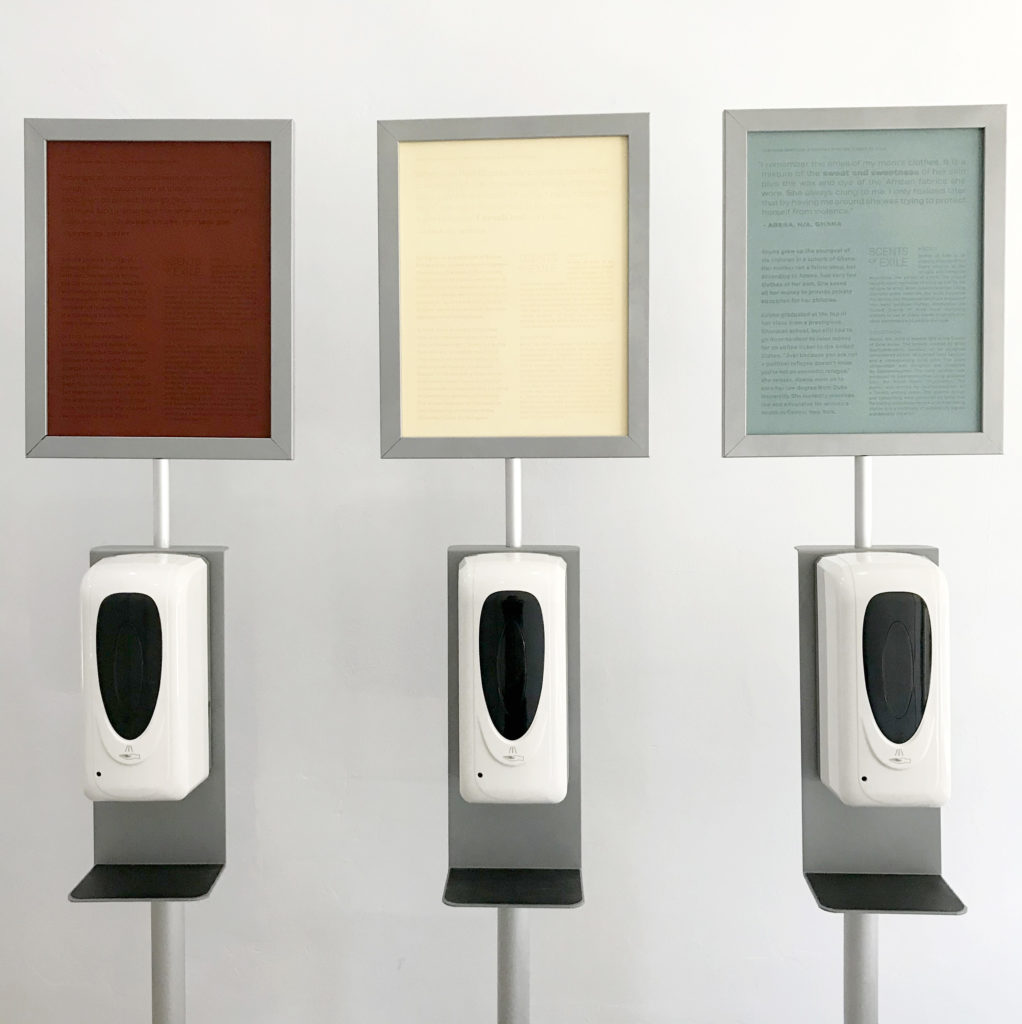
PRESS RELEASE
Brian Goeltzenleuchter: Scents of Exile, June 3 to June 26, 2021 at Olfactory Art Keller, 25 Henry Street, New York
Scents of Exile is an ongoing art project started in 2019 that bears witness to the immigrant experience, one person at a time. For Scents of Exile, Goeltzenleuchter interviews refugees and other immigrants about their scent memories of home. Odors, which are ephemeral and fleeting, have a strong connection to place and often elicit vivid and emotional memories—a phenomenon known as the “Proust effect.”
Goeltzenleuchter uses the interviews as inspiration to create fragrances using cosmetic-grade materials. These fragrances are then embedded in hand sanitizer. Each Scents of Exile station consists of a freestanding dispenser filled with scented hand sanitizer ,and a printed display summarizing the interviewee’s story and scent memories.
Goeltzenleuchter intends for the Scent of Exile stations to be installed at cultural institutions for use by the public at events. The goal is to raise awareness of the diversity of immigrant experiences and facilitate a dialogue. When a visitor sanitizes their hands, the fragrance is transferred to the visitor who will carry it with them after leaving the institution, thereby taking the scent memory with them and becoming part of the artwork in a performative act.
At Olfactory Art Keller, eight Scents of Exile stations will be on display, including one that dispenses hand sanitizer scented to evoke the smell of sweat, smoke, and tear gas reminiscent of protests in Egypt during the Arab Spring (Keyro, 22, 2019), and one that dispenses hand sanitizer scented to evoke the smell of boiled milk (Azira, 52, 2019). In parallel to the exhibition, several Scents of Exile stations are being used in museums in Bremen, Germany as part of Smell it! Smell in Art, the multi-museum survey of olfactory art. The artist will be present for an informal opening reception on Thursday, June 3rd from 4 to 6 pm. At 6 pm on June 3rd, he will discuss his work, including Scents of Exile, with Saskia Wilson-Brown of the Institute of Art and Olfaction.

